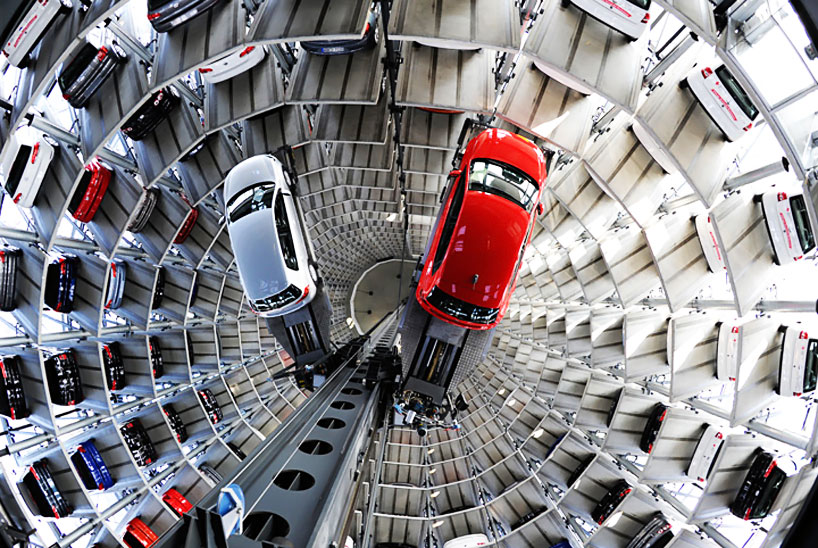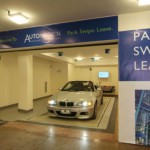Automated parking systems: a field guide
When Affirmed Housing Group – a low-income developer in L.A. – decided to build a parking garage for the new 60-unit Lotus Garden apartments, it was a huge challenge. To start with, the apartment’s location on a steep hill made a conventional underground garage impossible. Architects realized a semi-automated parking structure would be the perfect solution for this problem.
Automated parking systems save precious ground space, enabling drivers to stuff more vehicles into less space, and benefiting builders by increasing profitability of projects. Each automated parking system varies in cost and technology; here are a few types of automated parking systems we’ve run into.
Carmatrix automated parking system
For the seven stories tall Lotus Garden apartment building, developers chose a semi-automated, puzzle-grid parking system – a car matrix. One of its kind in Southern California, the parking system is built by Denver-based company Harding Steel. The parking structure resembles “…a mechanic’s car lift and something that might fetch large packages at a UPS distribution center,” reports the L.A. Downtown News.
After moving the car into a stall, drivers punch in a code, assigned to a parking space, on a push button control system. The system moves cars to the left, right, up, and down to free up the corresponding space. With a cost of $17,000 per space, costs works out comparably to conventional parking, but Carmatrix saves significant space. The downside? It takes between 30 seconds to 3 minutes to retrieve a vehicle.
Tower automated parking system

Tower automated parking system. Image by automatedparking.com
With a retrieval time of 50-70 seconds, this system is the fastest automated parking option. It uses a high-speed elevator with cars on both sides, accommodating 50 cars in the space a conventional system would use for three cars.
Usually, there is a parking module at the bottom of the tower, and the car is turned and then raised by the elevator, which deposits it into a parking space. Having a single parking mechanism creates a bottleneck – this system’s main drawback.
Shuttle automated parking system
This is a more complex system, but as it uses multiple shuttles, it is also faster. The shuttles move horizontally on a set of rails or a shuttle lane to a pre-determined location. Next, conveyor belts, a pallet exchanger, or a robot park the vehicle by moving it from the shuttle to the parking space.
Usually, there is a single row of cars on both sides of the shuttle lane. While a second row of cars can be added if required, the parking procedure becomes longer and more complex in that case.
In case cars have to be moved between levels, it can be done using car elevators or shuttle elevators. If the system uses a car elevator, the shuttle positions itself next to the elevator and then moves the car on the elevator platform. After the elevator moves the car to the required level, another shuttle similarly shifts the car from the elevator.
If a shuttle elevator is used, then the shuttle moves with the car on the elevator. After the elevator reaches the required level, the shuttle simply moves off with the car from the shuttle elevator.
Silo automated parking system
These are cylindrical systems with one parking and retrieval mechanism in the center. As this mechanism moves vertically while rotating, it enables car platforms to shift from one parking space to another rapidly. These systems are most often found underground, but developers can install them above ground, too.

Volkswagen parking lot silos at Autostadt. Image by DesignBoom.com
Related Posts
Category: Green Parking, Parking Tech




















